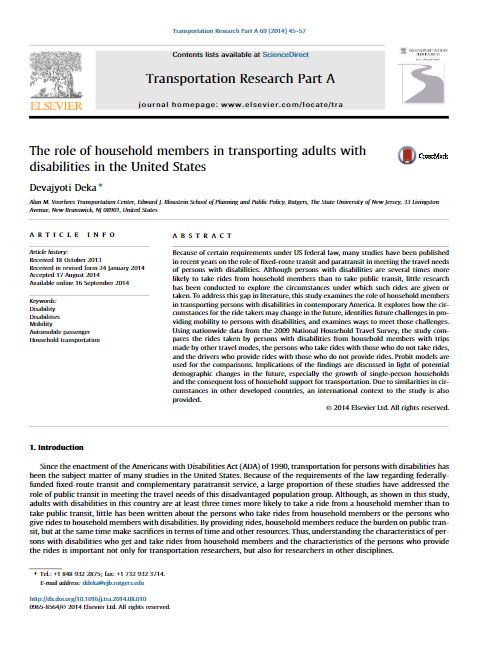Abstract
Because of certain requirements under US federal law, many studies have been published in recent years on the role of fixed-route transit and paratransit in meeting the travel needs of persons with disabilities. Although persons with disabilities are several times more likely to take rides from household members than to take public transit, little research has been conducted to explore the circumstances under which such rides are given or taken. To address this gap in literature, this study examines the role of household members in transporting persons with disabilities in contemporary America. It explores how the circumstances for the ride takers may change in the future, identifies future challenges in providing mobility to persons with disabilities, and examines ways to meet those challenges. Using nationwide data from the 2009 National Household Travel Survey, the study compares the rides taken by persons with disabilities from household members with trips made by other travel modes, the persons who take rides with those who do not take rides, and the drivers who provide rides with those who do not provide rides. Probit models are used for the comparisons. Implications of the findings are discussed in light of potential demographic changes in the future, especially the growth of single-person households and the consequent loss of household support for transportation. Due to similarities in circumstances in other developed countries, an international context to the study is also provided.
